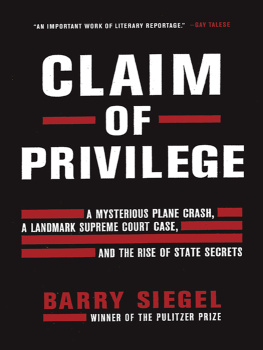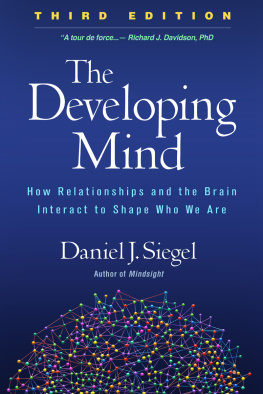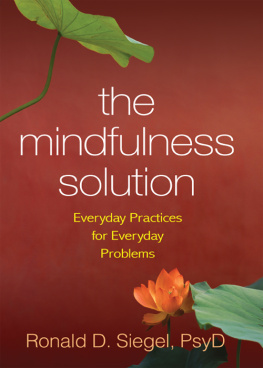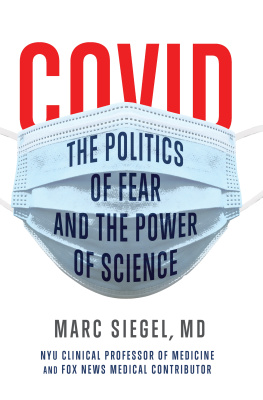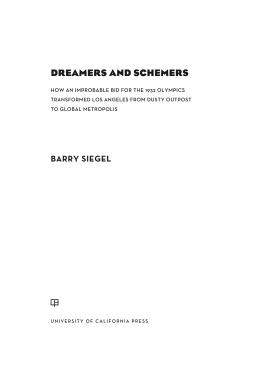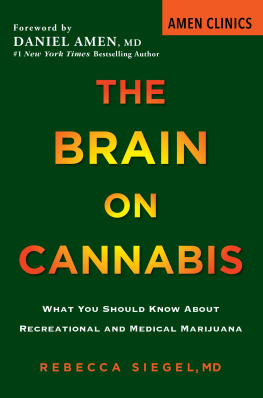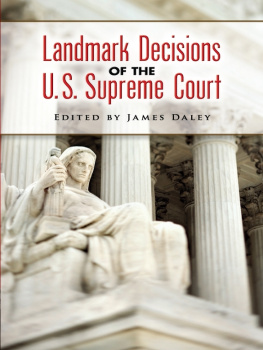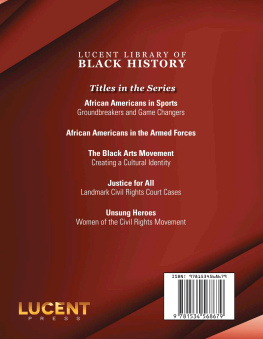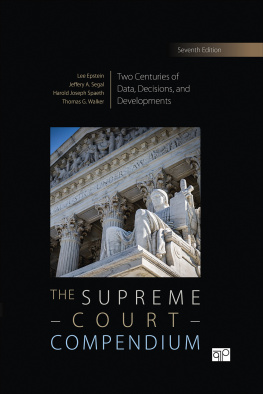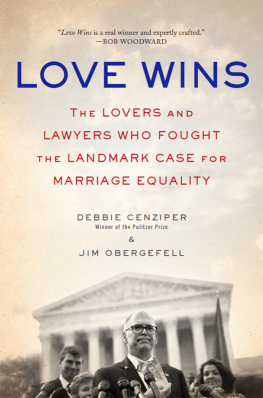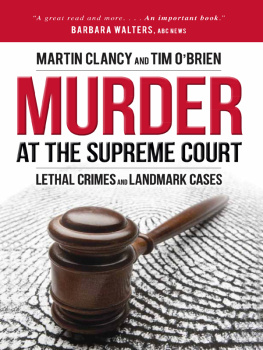To every family touched by the fall of a B-29 over Waycross,
Georgia, on October 6, 1948. And to my family as well: Marti
and Ally, forever my special girls.
Contents
Part I: Challenges
June 1946June 1949
Part II: Courtrooms
December 1948December 1953
Part III: Consequences
July 1953October 2002
Part IV: Revelations
July 2002September 2007
T HE REPORTS BEGAN AS A TRICKLE, JUST A FEW BRIEF NOTICES. T HE TALE they told was a curiosity, a human interest story with a twist: The widow and offspring of three civilian engineers whod perished half a century before in the crash of an Air Force B-29 were now asking the Supreme Court to reconsider a lawsuit their families had filed at the dawn of the Cold War. The High Court had erred in overturning their damages award back then, the widow and offspring were claiming. The government had lied to the justices. Wrongs must be righted. The petitioners wanted redress.
Yes, human interest with a twist, yet much more. The name of the one surviving widow spoke volumes: Patricia Reynolds Herring. Patricia Reynolds . The long-ago case now under challenge carried her name: U.S. v. Reynolds. It wasnt as well known as, say, Miranda , or Gideon , or Brown v. Board of Education. Over the years, though, U.S. v. Reynolds had wielded comparable influence. In this landmark 1953 ruling, the Supreme Court had formally recognized and established the framework for the governments state secrets privilegea privilege that for decades had enabled federal agencies to conceal conduct, withhold documents, and block civil litigation, all in the name of national security.
Since 1973, the government had been asserting the privilege with increasing frequency, but the ramifications of U.S. v. Reynolds reached well beyond those direct assertions: By encouraging judicial deference when the government claimed national security secrets, Reynolds had empowered the Executive Branch in myriad ways. Among other things, it had provided a fundamental legal argument for much of the Bush administrations response to the 9/11 terrorist attacks. Enemy combatants such as Yaser Esam Hamdi and Jose Padilla, for many months confined without access to lawyers, had felt the breath of Reynolds. So had the accused terrorist Zacarias Moussaoui when federal prosecutors defied a court order allowing him access to other accused terrorists. So had the Syrian-Canadian Maher Arar, like dozens of others the subject of a CIA extraordinary rendition to a secret foreign prison. So had hundreds of detainees at the U.S. Navy base at Guantnamo Bay, held without charges or judicial review. So had millions of American citizens when President Bush, without judicial knowledge or approval, authorized domestic eavesdropping by the National Security Agency.
U.S. v. Reynolds made all this possible. The bedrock of national security law, it had provided a way for the Executive Branch to formalize an unprecedented power and immunity, to pull a veil of secrecy over its actions. Yet now here came Patricia Reynolds Herring and three other women, claiming, in a twenty-eight-page petition, that U.S. v. Reynolds arose from a willful fraud perpetrated on the Supreme Court by the government of the United States. By asking the Supreme Court to remedy fraud, the four women behind this petition were taking aim at the very foundation of the state secrets privilege.
Journalists began to scramble. No wonder. Who could ignore the connections between the apocalyptic anxieties of the Cold War and post-9/11? Who could ignore the violation of civil liberties, the abuse of constitutional protections?
Here was history writ both large and small. This story told of ordinary citizens lives intersecting with those of the countrys most powerful leaders. The personal and private began with the widows. Patricia Reynolds, whod sat tearless in a hotel room on the day she lost her newlywed husband, finally wept half a century later. Phyllis Brauner, who never remarried, struggled till her last days with unanswered questions. Elizabeth Palya, who sewed, cooked, and nightly set a formal dinner table, hoped always to make her childrens lives fulfilling.
Now, to those whod begun to call, Elizabeths daughter, Judy, said: This story is all about America. It isnt about a plane crash. Its about my country doing the wrong thing.
It was also about the respectable relatives of civilian engineers finding common ground with enemy combatants such as Yaser Esam Hamdi, then confined in a Navy brig. Enabled by Reynolds, unchecked by judges, the federal government had withheld information from them all for national security reasons. The government had essentially said, believe me . Whatever happens, one law professor advised, the new Reynolds petition is a reminder that even though we have checks and balances, judges have thus far trusted high government officials.
Whatever happens. Could the new Reynolds petition undo everything Reynolds had wrought? Could the petition vacate that landmark 1953 ruling, could it wipe out the whole edifice of national security law? Not likely. But perhaps it could slow the false claims, the abuse of trust. At the least, it could tell the story of how this all came to bethis story about America.
E ARLY ON THE MORNING OF F EBRUARY 26, 2003 A CLOUDY, chilly Wednesdaya determined woman of middle age struggled up the steps that led to the main western portico of the U.S. Supreme Court in Washington, D.C. She had a large purse over her shoulder, a package cradled in one arm, and in her free hand a wheeled black cart that held, by bungee cord, a cardboard box the size of an airplane carry-on. Eight initial steps from the First Street sidewalk, then a large raised plaza paved in gray and white marble, then nineteen more steps to a small plateau. Frances Bisicchia looked up at the building before her. The white marble exterior gave the building a startling radiance. The fluted Corinthian columns topped by American eagles, the bronze flagpoles, the perfect symmetryFran glanced around, hoping to see a famous politician.
She finally reached the portico. There, on each side, sat two figures carved by James Earle Fraser, Contemplation of Justice and Authority of Law. In the pediment above, Fran could see the sculptural group by Robert Ingersoll Aitken, Liberty Enthroned by Order and Authority. Below the pediment, she could see the inscription, Equal Justice Under Law. There, before her, were the glorious bronze doors that formed the main entrance to the building.
The doors stood open, protected by a female guard. Ive come to file a petition, Fran said.
The guard studied her. You cant do that here. You cant bring any packages into the court building. The guard directed her to a sentry station on the far north side.
Fran headed back down forty-four steps. Shed been to Washington just once before, on a chartered-bus day tour. For nearly twenty years, shed worked as a clerk at the Philadelphia law firm Drinker Biddle & Reath. Inside her cardboard box were forty copies of the petition that her law firm meant to file with the Court clerks office. This was no ordinary petition but rather a rare request for a writ of error coram nobis a petition that asks the Court to correct an error committed in proceedings before us.
Once on the plaza, Fran turned right, circling around the building until she reached the sentry station and another female guard. This one would not touch the box of petitions; the aftermath of the late 2001 anthrax scare still lingered. She handed Fran a label for the box and a large plastic bag. Put the box in the bag, she advised, not at all unpleasantly. And tie a knot. Fran did as instructed, after pulling one copy of the petition from the box. She held it out to the guard, who time-stamped itFrans receipt.

